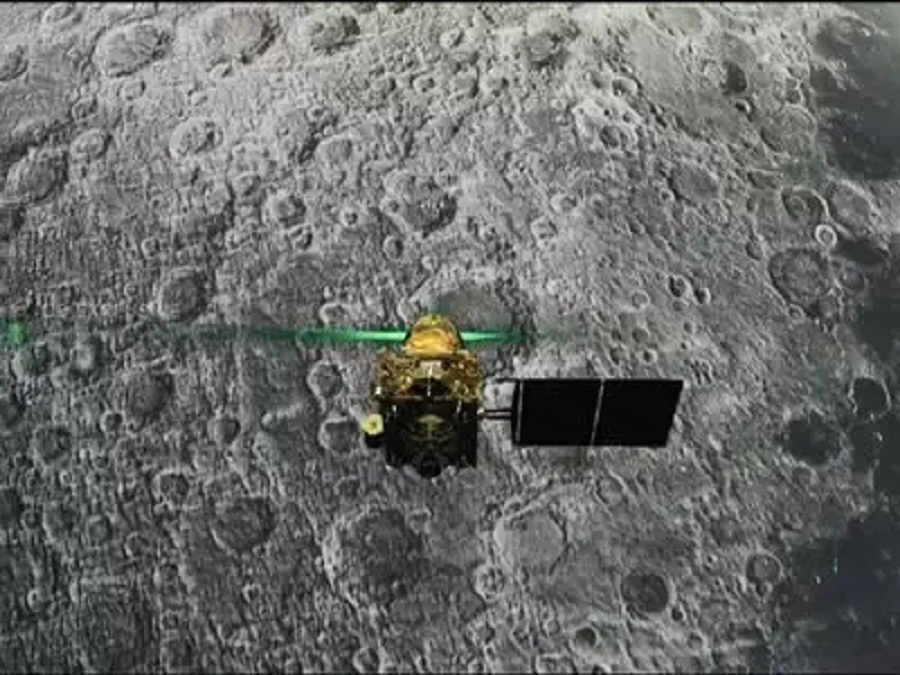NASA captures images of Vikram Lander’s landing site on Moon
| Date :20-Sep-2019 |

HOUSTON :
“ NASA’s Lunar Reconnaissance Orbiter (LRO) spacecraft has snapped a series of images during its flyby on September 17 of Vikram’s attempted landing sight near the Moon’s uncharted South Pole.”
NASA’s Lunar Reconnaissance Orbiter (LRO) spacecraft has snapped a series of images during its flyby on September 17 of Vikram’s attempted landing sight near the Moon’s uncharted South Pole. AS THE deadline to re-establish communication with Chandrayaan-2’s Vikram lander nears, NASA’s Moon orbiter has captured images of the lunar region where the Indian mission made an unsuccessful attempt to soft-land, a senior official with the US space agency confirmed on Thursday. NASA’s Lunar Reconnaissance Orbiter (LRO) spacecraft has snapped a series of images during its flyby on September 17 of Vikram’s attempted landing sight near the Moon’s uncharted South Pole.
It flew over the area of the Vikram landing site when local lunar time was near dusk; large shadows covered much of the area, LRO Mission deputy project scientist John Keller said in a statement to PTI. The probability of establishing contact with the lander has a deadline of September 21 because after that the Moon region will enter into a lunar night. “LRO Camera acquired images around targeted landing site, but the exact location of the lander was not known so the lander may not be in the camera field of view,” Keller said. “The LROC team will analyse these new images and compare them to previous images to see if the lander is visible (it may be in shadow or outside the imaged area),” Keller said.
The LRO will next fly over the landing site on October 14 when lighting conditions will be more favourable. NASA will make results of September 17 flyover available as soon as possible after a necessary period of validation, analysis, and review, Keller said. According to the Indian Space Research Organisation (ISRO), the lander Vikram and rover Pragyaan were supposed to be functional only for 14 days from the day of their touchdown. At the start of the mission, ISRO said that the mission life of the lander and the rover will be one lunar day which is equal to 14 Earth days, whereas that of the orbiter will be one Earth year. The nights on the Moon can be very cold, especially in the South Polar Region where Vikram is lying. Temperatures could drop to as low as minus 200 degrees Celsius during the lunar night. The instruments aboard the lander are not designed to withstand that kind of temperature.
The electronics would not work and would get permanently damaged. Therefore, if no connection is established in the next two days, ISRO may have to give up the hope to establish connection with the lander. In the early hours of September 7, ISRO’s plan to soft land Chandrayaan-2’s Vikram module on the lunar surface did not go as per script. The lander lost communication with ground stations during its final descent. ISRO officials said that the orbiter of Chandrayaan-2 remained healthy and safe.